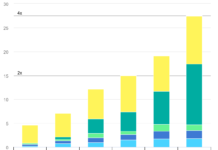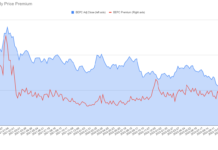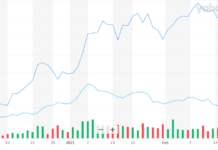By Harris Roen
If you follow the energy sector closely, then you know that many questions regarding the direction of alternative energy companies were looming during the 2012 campaign season. Was the country going to continue with the Obama Administration’s “all-of-the-above” strategy with its strong emphasis on renewables, or would there be an accelerated domestic drilling and pipeline bonanza under Republican leadership. When the election finally ended last week, many pundits expected investors to pour money into the beleaguered alternative energy sector resulting in a surge of stock prices. So why, instead, did alternative energy stocks head down?
What Happened?
First, let us look in detail at what happened in the last week of trading. Of the approximately 250 alternative energy companies that the Roen Financial Report tracks, only 21 companies, or less than 9%, were gainers. In other words, losers beat gainers by a 10:1 ratio! On average, alternative energy companies were down 5.8%, with 35 companies showing double-digit losses for the week. Of the 21 gainers, fully half were volatile penny stocks with market caps less than $100 million, so those gains may change very quickly.
Of the six alternative energy industries – wind, solar, smart grid, efficiency, fuel alternatives and environmental companies – wind fared the worst. Only two wind companies posted a gain for the week, Pike Electric Corporation (PIKE) and the highly speculative Quantum Fuel Systems Technologies (QTWW). Otherwise, the average wind company lost 6.0% for the week.
Why the Decline?
Many people are wondering why alternative energy stocks dropped so dramatically last week. Was it a sell-on-the-news situation? Do investors think alternative energy is doomed as a sector? Was it payback to big oil for all their election contributions? Perhaps some of this was true, but I believe it had more to do with the dog wagging the tail.
Overall, it was a bad week for the entire stock market, with the major averages down in the 4% range. According to Fidelity Investments, all 10 business sectors were down for the week. In fact, energy took the biggest hit of all the sectors, down 5.1%. Of the 68 industries Fidelity lists, only one, Biotechnology, showed a gain.
Most of the loss in stocks came on Wednesday, the day after the election. Apparently, everyone woke up to realize that not much changed concerning the economic crisis de jour – the fiscal cliff. After all the endless political gyrations and hundreds of millions of dollars spent, the country was pretty much back where it started: a democratic white house and a split congress. By Friday some of those losses were recovered, as savvy investors saw the drop as an overreaction, and thus a good buying opportunity.
Why was the energy sector hit in particular? Simply because short term oil price movementa have little to do with supply and demand, but have instead turned into a proxy for the outlook on the economy, and thus the stock market. Since 2009, the correlation between the S&P 500 and oil prices has been ridiculously tight, 1.00 being a perfect correlation. So when people started gazing over the ever-nearing fiscal cliff, the odds of a recession increased, oil futures dropped and energy stocks tanked.

What Lies Ahead?
So where are alternative energy stocks likely to go from here? I remain cautious in the short term, concerned that the broader economic picture will overshadow any sector plays. Between the threat of massive tax hikes and spending cuts in the U.S., and the re-fanning of the dangerous debt embers that are smoldering in Europe, I would not be surprised at all by a market correction in the 15% range or worse. This type of correction would not be surprising, though, considering the S&P 500 reached a high in September that was 33% above its lows at the end of 2011.
I see these market fears as conventional wisdom, however, so the contrarian in me views any major correction as a buying opportunity. As long as the U.S. stays in an ultra-low interest rate environment, as I believe it will for at least the next two years, the long-term trend in the stock market should remain positive.
If Washington continues to move ahead with alternative energy initiatives, and particularly if it takes bold steps such instituting a carbon tax, I believe energy efficiency companies will benefit the most. There is still much low hanging fruit in terms of cost savings and carbon reduction to be gained by reducing current energy usage.
Companies that could benefit include Cree, Inc. (CREE), a well-managed North Carolina based firm that manufactures efficient LED lighting as well as other products. Cree has had growing sales, relatively low debt levels and positive cash flow. A concern is that it has an excessively high PE, but if prices drop from current levels, the stock would become more attractive. Using an average of combined trailing and forward EPS, I see Cree as fairly priced in the $27/share range, and a good value at $25/share.
Because larger economic troubles may continue to put a drag on all sectors, including alternative energy, this looks like a good time for strategic investors to accumulate stocks at the right price.
Harris Roen is Editor of the “ROEN FINANCIAL REPORT” by Swiftwood Press LLC, 82 Church Street, Suite 303, Burlington, VT 05401. © Copyright 2010 Swiftwood Press LLC. All rights reserved; reprinting by permission only. For reprints please contact us at cservice@swiftwood.com. POSTMASTER: Send address changes to Roen Financial Report, 82 Church Street, Suite 303, Burlington, VT 05401. Application to Mail at Periodicals Postage Prices is Pending at Burlington VT and additional Mailing offices.
DISCLOSURE: No positions in or plans to purchase any of the stocks mentioned,
DISCLAIMER: Swiftwood Press LLC is a publishing firm located in the State of Vermont. Swiftwood Press LLC is not an Investment Advisory firm. Advice and/or recommendations presented in this newsletter are of a general nature and are not to be construed as individual investment advice. Considerations such as risk tolerance, asset allocation, investment time horizon, and other factors are critical to making informed investment decisions. It is therefore recommended that individuals seek advice from their personal investment advisor before investing.
These published hypothetical results may not reflect the impact that material economic and market factors might have had
on an advisor’s decision making if the advisor were actually managing client assets. Hypothetical performance does not reflect advisory fees, brokerage or other commissions, and any other expenses that an investor would have paid.
Some of the information given in this publication has been produced by unaffiliated third parties and, while it is deemed reliable, Swiftwood Press LLC does not guarantee its timeliness, sequence, accuracy, adequacy, or completeness, and makes no warranties with respect to results obtained from its use. Data sources include, but are not limited to, Thomson Reuters, National Bureau of Economic Research, FRED® (Federal Reserve Economic Data), Morningstar, American Association of Individual Investors, MSN Money, sentimenTrader, and Yahoo Finance.









